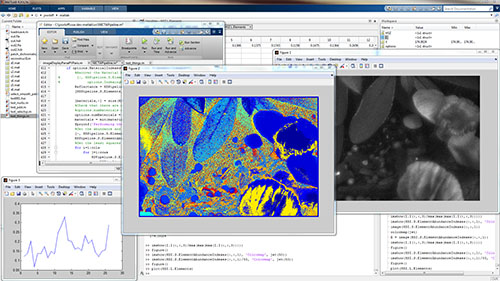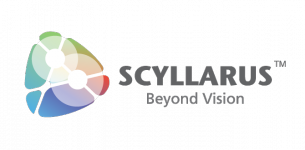An Extensive MATLAB® Library for Imaging Spectroscopy Research

The Scyllarus MATLAB® Toolbox is aimed at supporting research into Hyperspectral and Multispectral image processing. Scyllarus is implemented separately in this Toolbox to that of the C++ API, it is more comprehensive and provides features that cannot be found in the C++ API. It represents the bleeding edge of our research into spectral technologies at NICTA.
Features
- Spectrum management, combination and resampling functions
- Unmixing of reflectances based on component endmember spectra
- Unmixing of illumination spectrum based on canonical illuminant spectra
- Decomposition of the scene into a set of object materials using
- Deterministic annealing
- K-means
- Image reformatting and resampling functions
- Representation of the spectral data using smooth functions based on
- Gaussian functions
- NURBS (Non-uniform Rational B-Splines)
- Recovering an RGB image from a Hyperspectral image
- HSZ file format operation functions
File Formats
- Support for reading and writing ENVI standard header files.
- Compressed Image Format – HSZ, NICTA’s Hyperspectral compressed image format, for storing Hyperspectral and multispectral images
- Supported for both reading and writing
- Native support of Gaussian and NURBS spectra representations
- Based on the well-known HDF5 format and libraries
- See here for more information about NICTA’s HSZ compressed Hyperspectral image format
- Spectral Library Format – SLZ, NICTA’s Spectrum Library file format
- Supported for both reading and writing
- Based on the well-known HDF5 format and libraries
- Can be used to store Illuminant spectra, material reflectance spectra, sensitivity functions, etc.
- Native support of Gaussian and NURBS spectra representations
Illuminant Recovery Methods
The following Illuminant recovery methods are supported
- Huynh and Robles-Kelly (Huynh & Robles-Kelly, 2010)
- Finlayson and Schaeffer (Finlayson & Schaefer, 2001)
- Grey World (Buchsbaum, 1980)
- White Patch Method (McCann, Hall, & Land, 1977)
- Grey Edge Method (van de Weijer, Gevers, & Gijsenij, 2007)
Recovery of Object Shading and Specularity
The following methods are supported.
- Huynh and Robles-Kelly (Huynh & Robles-Kelly, 2010)
- Gu, Robles-Kelly and Zhou (Gu, Robles-Kelly, & Zhou, 2013)
- Tan and Ikeuchi (Tan & Ikeuchi, 2005) *
Documentation
- Extensive in-line documentation is available within the package. You can also view the documentation online.
- Example code
Requirements and Download
Scyllarus has been tested on versions of MATLAB® from 2011a onwards. Download size is ~10MB.
The Scyllarus Matlab Toolbox uses the following MATLAB® Toolboxes:
- Image processing Toolbox
- Statistics Toolbox
- CSparse sparse matrix manipulation
- HDF5 file reading and writing library
* Items use MEX and are currently Windows x64 only.
If you make use of the Scyllarus MATLAB® toolbox for your research, please cite the relevant papers as indicated within the documentation.
Bibliography
Buchsbaum, G. (1980). A spatial processor model for object colour perception. Journal of the Franklin Institute, 310(1), 337–350.
Finlayson, G. D., & Schaefer, G. (2001). Solving for colour constancy using a constrained dichromatic reflection model. International Journal of Computer Vision, 42(3), 127–144.
Gu, L., Robles-Kelly, A., & Zhou, J. (2013). Efficient Estimation of Reflectance Parameters from Imaging Spectroscopy. IEEE Transactions on Image Processing, 22(9), 3648 – 3663.
Huynh, C. P., & Robles-Kelly, A. (2010). A Solution of the Dichromatic Model for Multispectral Photometric Invariance. International Journal of Computer Vision, 90(1), 1-27.
McCann, J. J., Hall, J. A., & Land, E. H. (1977). Color mondrian experiments: the study of average spectral distributions. Journal of the Optical Society of America A, 67, 1380.
Tan, R. T., & Ikeuchi, K. (2005). Separating Reflection Components of Textured Surfaces from a Single Image. IEEE Transactions on Pattern Analysis and Machine Intelligence, 27(2), 178-193.
van de Weijer, J., Gevers, T., & Gijsenij, A. (2007). Edge-based color constancy. IEEE Transactions on Image Processing, 16(9), 2207–2214.
